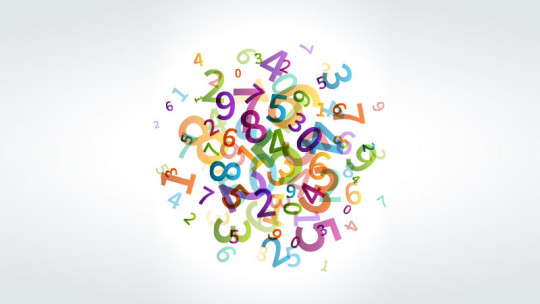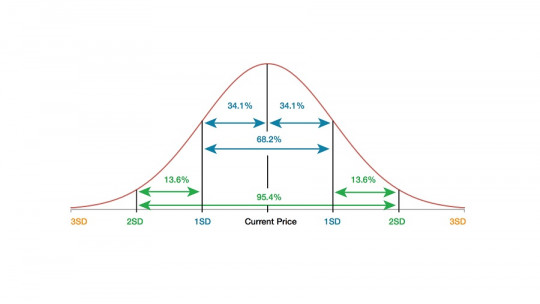
What are real numbers? It is the set of numbers that include natural numbers, integers, rational and irrational numbers. Throughout this article we will see what each of them consists of. On the other hand, real numbers are represented by the letter “R” (ℜ).
In this article we will learn about the classification of real numbers, made up of the different types of numbers mentioned at the beginning. We will see what its fundamental characteristics are, as well as examples. Finally, we will talk about the importance of mathematics and its meaning and benefits.
What are real numbers?
Real numbers can be represented on a number line understanding rational and irrational numbers.
That is, the classification of real numbers includes positive and negative numbers, 0 and numbers that cannot be expressed by fractions of two integers and that have non-null numbers as their denominator (that is, that are not 0). Later we will specify what type of number corresponds to each of these definitions.
Something that is also said about real numbers is that they are a subset of complex or imaginary numbers (these are represented by the letter “i”).
Classification of real numbers
In short, and to put it in a more understandable way, Real numbers are practically the majority of numbers we deal with in our daily lives and beyond it (when we study mathematics, especially at a more advanced level).
Examples of real numbers are: 5, 7, 19, -9, -65, -90. √6, √9, √10, the number pi (π), etc. However, this classification, as we have already said, is divided into: natural numbers, integers, rational numbers and irrational numbers. What characterizes each of these numbers? Let’s see it in detail.
1. Natural numbers
As we saw, within real numbers we find different types of numbers. In the case of natural numbers, these are the numbers we use to count (for example: I have 5 coins in my hand). That is: 1, 2, 3, 4, 5, 6… Natural numbers are always integers (that is, a natural number could not be “3.56”, for example)
Natural numbers are expressed by the handwritten letter “N”. This is a subset of integers.
Depending on the definition, we find that natural numbers either start from 0 or from 1. These types of numbers are used as ordinal (for example, I am second) or as cardinal (I have 2 pants).
From the natural numbers, other types of numbers are “constructed” (they are the starting “base”): integers, rationals, real numbers… Some of their properties are: addition, subtraction, division and multiplication; That is, you can perform these mathematical operations with them.
2. Integers
Other numbers that are part of the classification of real numbers are integers, which are represented by “Z” (Z).
They include: 0, natural numbers and natural numbers with a negative sign (0, 1, 2, 3, 4, -1, -2, -3, -4…). Integers are a subset of rational numbers.
Thus, these are those numbers written without a fraction, that is, “integer form.” They can be positive or negative (for example: 5, 8, -56, -90, etc.). On the other hand, numbers that include decimals (such as “8.90”) or that result from some square roots (for example √2) are not integers.
Integers also include 0. Integers are actually part of the natural numbers (they are a small group of these).
3. Rational numbers
The following numbers within the classification of real numbers are rational numbers. In this case, Rational numbers are any number that can be expressed as the component of two whole numbers, or as their fraction
For example 7/9 (it is usually expressed by “p/q”, where “p” is the numerator and “q” is the denominator). Since the result of these fractions can be a whole number, whole numbers are rational numbers.
The set of this type of numbers, the rational ones, is expressed by a “Q” (uppercase letter). Thus, decimal numbers that are rational numbers are of three types:
The fact that rational numbers are part of the classification of real numbers implies that they are a subset of this type of numbers.
4. Irrational numbers
Finally, in the classification of real numbers we also find irrational numbers. Irrational numbers are represented as: “RQ”, which means: “the set of real numbers minus the set of rational numbers.”
These types of numbers are all those real numbers that are not rational. Thus, these cannot be expressed as fractions. These are numbers that have infinite decimals, and that are not periodic.
Within the irrational numbers, we can find the number pi (expressed by π), which consists of the relationship between the length of a circle and its diameter. We also find some others, such as: Euler’s number (e), the golden ratio (φ), the roots of prime numbers (for example √2, √3, √5, √7…), etc.
Like the previous ones, as it is part of the classification of real numbers, it is a subset of the latter.
The sense of numbers and mathematics
What is the use of mathematics and the concept of numbers? What can we use mathematics for? Without going any further, in our daily lives we constantly use mathematics: to calculate changes, to pay, to calculate expenses, to calculate times (of journeys, for example), to compare schedules, etc.
Logically, beyond the day, mathematics and numbers have countless applications, especially in the field of engineering, computing, new technologies, etc. From them we can manufacture products, calculate data that interests us, etc.
On the other hand, beyond the sciences of mathematics, there are other sciences that are actually applied mathematics, such as: physics, astronomy and chemistry. Other sciences or careers as important as medicine or biology are also “soaked” in mathematics.
So, you can practically say that… we live among numbers! There will be people who use them to work, and others to make simpler calculations in their daily lives.
Structure the mind
On the other hand, numbers and mathematics structure the mind; They allow us to create mental “drawers” where we organize and incorporate information. So, actually, Mathematics not only serves to “add or subtract”, but also to compartmentalize our brain and our mental functions.
Finally, the good thing about understanding the different types of numbers, such as in this case those included in the classification of real numbers, will help us enhance our abstract reasoning, beyond mathematics.








